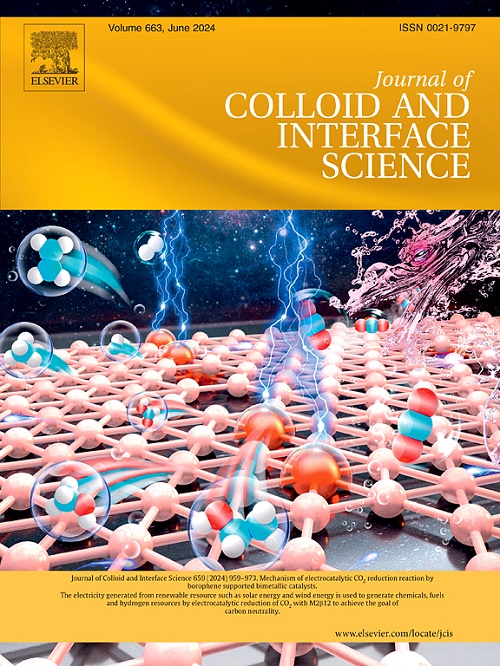Synthesis and luminescence mechanism of fluorine-doped carbon dot-based composites with long lifetime and dual-mode afterglow
IF 9.7
1区 化学
Q1 CHEMISTRY, PHYSICAL
引用次数: 0
Abstract
Carbon dots (CDs) as afterglow materials have advantages including easily available raw materials, cost effectiveness, low toxicity, facile surface functionalization, and tunable spectra, demonstrating potential applications in anti-counterfeiting, information encryption, optoelectronics, sensing, and bioimaging. However, most current CD-based afterglow materials exhibit either room-temperature phosphorescence (RTP) or thermally activated delayed fluorescence (TADF) emission, with few demonstrating both properties simultaneously. Their short afterglow lifetimes further limit practical applications. Herein, a long-lifetime dual-mode afterglow F, N-CDs@BA composites were prepared by fluorine doping strategy using boron oxide (B2O3) as the matrix. The TADF emission wavelength of F, N-CDs@BA is 430 nm, the lifetime is 1.21 s, and the afterglow is visible to the naked eye for about 11 s. The RTP emission wavelength is 510 nm, the lifetime is 0.47 s, and the afterglow is visible to the naked eye for about 13 s. Structural and optical characterizations revealed that the afterglow sources of F, N-CDs@BA composites at 430 and 510 nm originate from F, N-CDs and B2O3 matrices, respectively. Comparative analysis of structural and optical properties, combined with density functional theory calculations of electronic bandgap changes, confirmed that fluorine incorporation reduces the band gap and prolong the afterglow lifetime. All F, N-CDs embedded in different matrices exhibit afterglow emission, demonstrating their matrix universality. Finally, F, N-CDs@BA composites show potential application value in graphic anti-counterfeiting.

长寿命双模余辉氟掺杂碳点基复合材料的合成及发光机理
碳点(cd)作为余辉材料具有原材料易得、成本效益高、毒性低、表面功能化容易、光谱可调等优点,在防伪、信息加密、光电子、传感、生物成像等领域具有潜在的应用前景。然而,目前大多数基于cd的余辉材料要么表现出室温磷光(RTP),要么表现出热激活延迟荧光(TADF)发射,很少同时表现出这两种性质。它们短暂的余辉寿命进一步限制了实际应用。本文以氧化硼(B2O3)为基体,采用氟掺杂策略制备了长寿命双模余辉F, N-CDs@BA复合材料。F, N-CDs@BA的TADF发射波长为430 nm,寿命为1.21 s,余辉在11 s左右肉眼可见。RTP发射波长为510 nm,寿命为0.47 s,肉眼可见余辉约13 s。结构和光学表征表明,F, N-CDs@BA复合材料在430 nm和510 nm处的余辉源分别来自F, N-CDs和B2O3基体。结构和光学性质的对比分析,结合电子带隙变化的密度泛函理论计算,证实氟的掺入减小了带隙,延长了余辉寿命。嵌入在不同矩阵中的F, N-CDs均表现出余辉发射,表明其具有矩阵通用性。F, N-CDs@BA复合材料在图形防伪方面显示出潜在的应用价值。
本文章由计算机程序翻译,如有差异,请以英文原文为准。
求助全文
约1分钟内获得全文
求助全文
来源期刊
CiteScore
16.10
自引率
7.10%
发文量
2568
审稿时长
2 months
期刊介绍:
The Journal of Colloid and Interface Science publishes original research findings on the fundamental principles of colloid and interface science, as well as innovative applications in various fields. The criteria for publication include impact, quality, novelty, and originality.
Emphasis:
The journal emphasizes fundamental scientific innovation within the following categories:
A.Colloidal Materials and Nanomaterials
B.Soft Colloidal and Self-Assembly Systems
C.Adsorption, Catalysis, and Electrochemistry
D.Interfacial Processes, Capillarity, and Wetting
E.Biomaterials and Nanomedicine
F.Energy Conversion and Storage, and Environmental Technologies

 求助内容:
求助内容: 应助结果提醒方式:
应助结果提醒方式:


